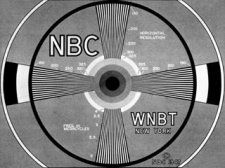
On the tenth anniversary of the Cluetrain Manifesto, Doc Searls had some thoughts about clue number 71. Click the link and read them yourself, it’s worth the effort. My takeaway was that we have lived in a world where we have to subscribe to vendors, but vendors don’t have to subscribe to us.
71. Your tired notions of “the market�? make our eyes glaze over. We don’t recognize ourselves in your projections—perhaps because we know we’re already elsewhere.
In prehistoric times, there were three networks that locked down the channels of attention. These focused audiences provided a large target to whom they could sell the equipment required to enact the American dream. It was a dream pre-dreamed for us by professionals experienced in the business of dreaming dreams.
When the audiences began wandering off, spending their attention on dreams not listed in the handbook– the new imagery was incorporated. The channel had one direction so it seemed as though the dream manufacturers had tuned in to the spirit of the times. New images appeared in the dreams, although something wasn’t quite right.
When you control a uni-directional channel, you can overplay your hand. But, of course, the channel doesn’t really only go one way. And what can be co-opted by one set of players, can result in subliminal blow back on another frequency.
Tw*tter has distracted a sizable section of the audience from the crumbling remnants of the prehistoric attention focusing machines. The new channels are now being flooded with celebrities to refocus the audience’s attention. The analysts and consultants are conspiring to brew up a formula that can painlessly transport the brands to the new medium with their self-dreamed power and status intact. It doesn’t do to tell the powerful that the basis of their power is dissolving without providing an escape route to the next peak poking through the clouds.
The brands have sent their robots to follow me on Tw*tter. They’ve analyzed my tweets and have determined that I’m a customer– or potentially could be one. They’re listening to my broadcasts and sifting through them to build a profile to create an automated relationship. The polarity of the channel has been reversed. The brand subscribes to me– but I’ve yet to set the terms of that subscription. I can choose to reciprocate and subscribe– or I can block a brand that gets out of hand. The brand has its legacy communications channel that can be correlated with the new channel. They’re hoping this new combination will be more powerful than ever.
We are what we do with our attention.
– John Ciardi
The cognitive surplus of our attention has been held spellbound for decades. Ten years ago, when Doc Searls said “we know we’re already elsewhere,” he paired that with the reaction “our eyes glaze over.” In other words, we withdraw from the world with which we’re confronted. In the ten years since, we now listen to Clay Shirky say, “any dream that ships without a mouse, ships broken.”
Comments closed

